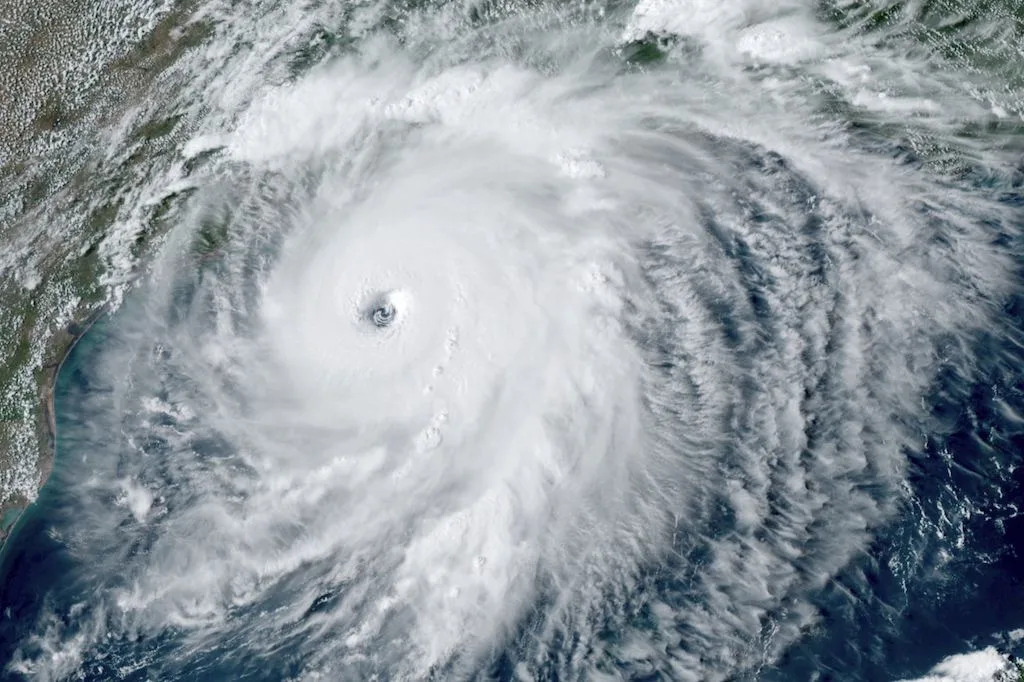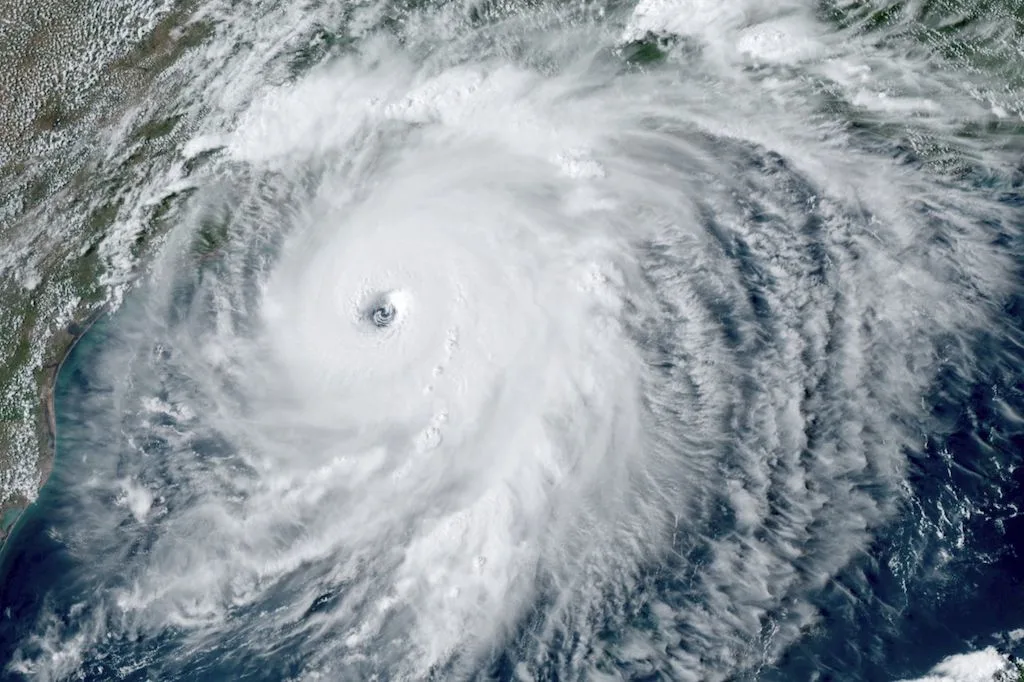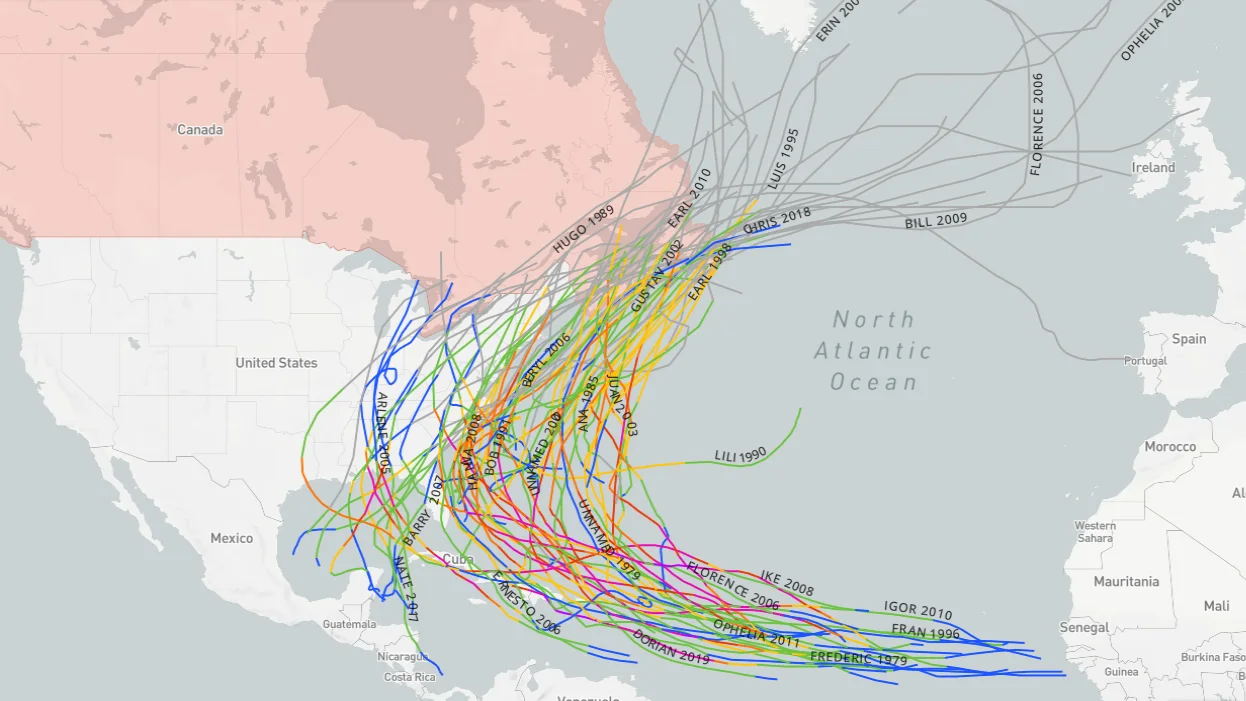
Tropical cyclones are growing stronger, and climate change is probably to blame
Research shows tropical cyclones are reaching their peak intensity farther north, which may impact Canadians in the future.
A new study published ahead of the next global climate summit has found a definite increase in tropical cyclone intensity over the past four decades. According to the researchers, the most likely culprit for this intensification is climate change.
One of the most important questions in climate science today is whether we are seeing more severe weather due to global warming. In some cases, such as with wildfires, the evidence is solid. With others, showing a direct connection is not as simple or straightforward. Given the immense impact tropical storms and hurricanes can have on our communities, it is of great importance that we learn what to expect from these storms as global temperatures increase.
Based on climate model projections, it's unclear if we will see an increase in the number of tropical cyclones that occur. Several studies have actually predicted that we will see the same, or even fewer, tropical cyclones in years to come as the planet warms. However, these same projections show that the intensity and intensification rate of these storms are expected to rise.

Hurricane Laura, pictured here in imagery from the GOES-16 weather satellite taken Wednesday, August 26, 2020, was the first major hurricane of the 2020 Atlantic hurricane season. Credit: NOAA
Are we actually seeing these trends, though?
To answer this question, researchers from the U.S. National Oceanic and Atmospheric Administration (NOAA), Princeton University, and the University of East Anglia poured through 90 peer-reviewed studies written over the past decade. In a new report, they reveal that while there has been no significant increase in the number of tropical cyclones worldwide, there has been a definite rise in storm intensity in recent decades.
"The intensity of tropical cyclones has increased globally in recent decades, with the proportion of Category 3 to 5 cyclones growing by around 5 per cent per decade since 1979," study co-author Gabriel Vecchi, a researcher at Princeton's High Meadows Environmental Institute, said in a press release.
"Larger and more intense tropical cyclones tend to cause more damage than smaller, weaker storms, so shifts toward a greater proportion of intense storms are of concern," Vecchi added.
Read more: Climate change has altered where tropical cyclones occur, study says
The researchers also noted several other trends. Tropical cyclones are undergoing more rapid intensification. A recent example of this is Hurricane Harvey in 2017, which only reached Tropical Storm strength while over Atlantic waters. Upon crossing into the Gulf of Mexico, though, the storm regenerated and rapidly strengthened from a tropical depression to a Category 4 hurricane in just over 2 days.

Hurricane Harvey, captured here during its peak Category 4 strength, on August 25, 2017, by the GOES-16 weather satellite. Credit: NOAA
There has also been an observed tendency for storms to move more slowly, the latitude where tropical cyclones reach their maximum intensity has been shifting closer to the poles, and sea-level rise has been adding to the flooding and inundation risks associated with storm surge.
All of these trends can directly influence the potential damage done by a tropical cyclone. Rapid intensification reduces preparation time for a storm's arrival. A slower-moving storm can drop more rainfall over regions in its path, thus increasing flooding risks. At the same time, affected areas are also subjected to their intense winds for longer. Also, the poleward, or more specifically northward, migration of peak intensity can result in greater impacts to regions where the people and infrastructure are unprepared for these kinds of storms.
Watch below: The names of four destructive hurricanes will be retired forever
While the observed migration of peak storm intensity is currently seen mainly in the Pacific and Indian oceans, in the future, this can become very important to Canadians.
According to Environment and Climate Change Canada: "On average, the Canadian Hurricane Centre responds to three or four tropical cyclone events each year, with one or two of those events affecting Canadian soil and another two or three events threatening offshore waters, regardless of the number of storms forecast for the entire Atlantic basin."
Hurricanes draw their strength from warm ocean waters. Most often, Atlantic storms encounter enough cold water north of the Gulf Stream that their strength is significantly reduced by the time they impact Canada. As ocean temperatures rise, however, storms can maintain their strength longer. ECCC currently considers it "virtually impossible" for Canada to see a hurricane stronger than Category 3. If these trends continue, and expand into the Atlantic ocean, stronger storms will begin reaching Canadian shores.

Between 1979-2020, 67 storms of at least tropical depression strength have gone on to impact some part of Canada. As noted by the colours of the storm tracks, the vast majority have weakened significantly by the time they reach this far north. Credit: NOAA
The research team prepared this report for the upcoming COP26 summit in Glasgow, which is run by the IPCC — a group that is traditionally fairly conservative with their messaging regarding climate change attribution. Since many different factors can influence storms, the researchers noted that solidly attributing the observed trends solely to human-induced climate change is difficult. However, as the trends match up reasonably well with what is expected in a warming climate, they concluded that climate change is probably responsible for the observed intensification of tropical cyclones.
"It is possible that in the real world, hurricane activity will increase more than suggested by the range of existing studies — or perhaps less," lead author Thomas Knutson, Division Leader of NOAA's Geophysical Fluid Dynamics Laboratory at Princeton, said in the press release.
"Unfortunately, humans are on a path to find out through actually increasing global temperatures beyond levels experienced during human history, and then we will see how things turn out."







